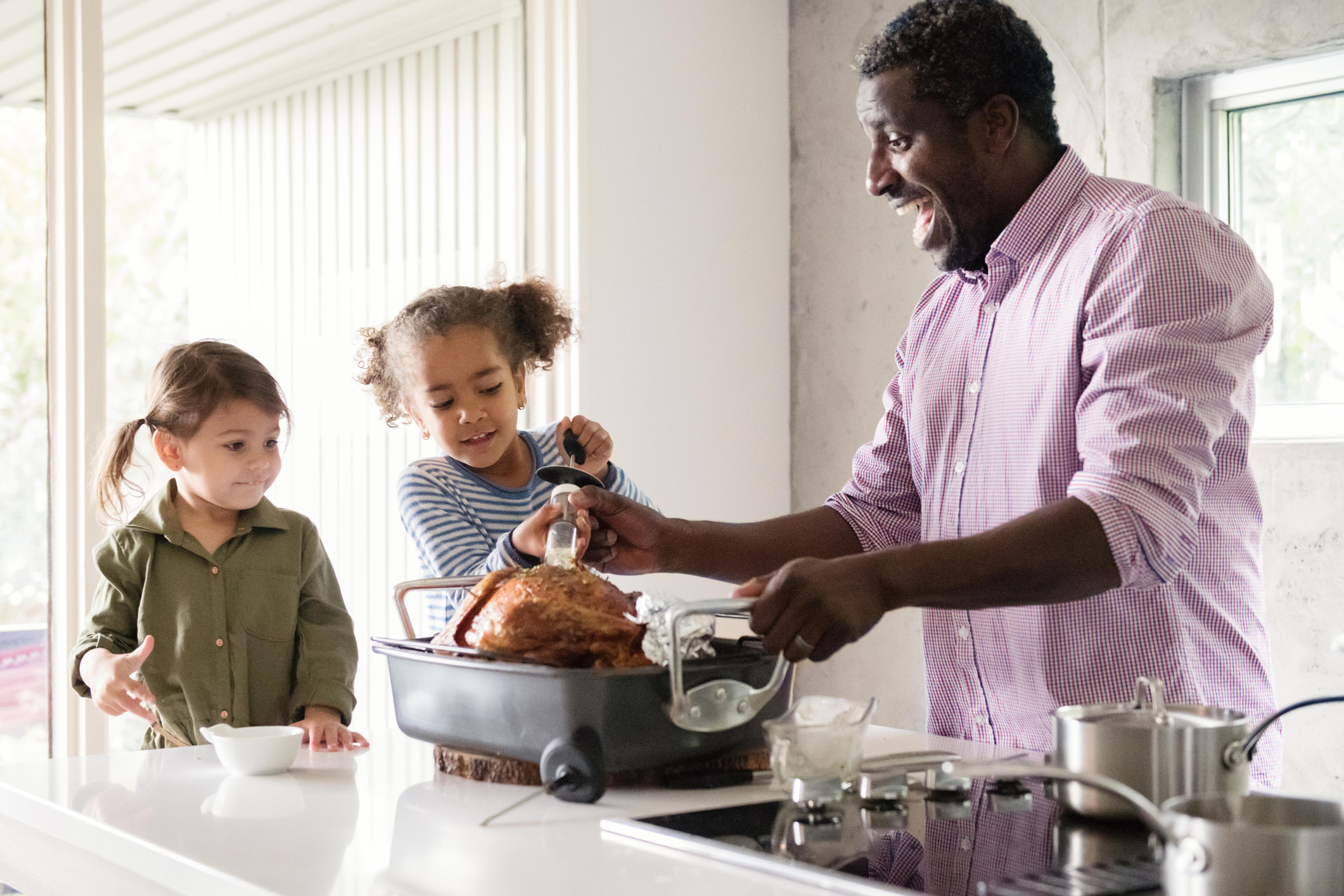
Thanksgiving Day will be here soon - the pressure is on! Cooking this special meal does not have to be intimidating. Con algunos recordatorios sobre la seguridad alimentaria, puede asegurarse de poder disfrutar de su comida de Acción de Gracias sin dejar de estar agradecido y saludable.
Mantener el refrigerador limpio
- Handwashing is the first step to protect you and everyone around your Thanksgiving table. It's also the best way to keep uninvited guests like bacteria out of your kitchen. In several observational studies, USDA found that consumers repeatedly failed to properly wash their hands, specifically not scrubbing their hands with soap for the required 20 seconds to remove germs. There are five simple steps to properly wash your hands:
- Moje sus manos con agua corriente limpia (caliente o fría), cierre el grifo y aplique jabón.
- Haga espuma al frotar las manos con el jabón. Procure llegar al dorso de las manos, los espacios entre los dedos y debajo de las uñas.
- Frótese las manos durante 20 segundos.
- Enjuáguese bien las manos con agua corriente limpia.
- Dry your hands using a clean towel.
- Make sure food preparation surfaces and utensils are clean and sanitized before you start cooking.
- To clean your surfaces, you will need soap and hot water, and a paper or dish towel. Use these to remove any dirt and debris you can see.
- Then, you should sanitize the surfaces to kill any remaining bacteria. Many different sanitizers can be used. An easy homemade sanitizing solution can be made by mixing one tablespoon liquid chlorine bleach with one gallon of water, or you can use a commercial sanitizer or sanitizing wipe. Allow to air dry and follow the label instructions on commercial sanitizers to determine whether you need to rinse food preparation areas after use.
- Campylobacter and Salmonella, bacteria found in poultry products, can survive on countertops and other kitchen surfaces from 4 to up to 32 hours, so make sure you repeat this step after handling raw turkey.
Meal Prep
- Keep raw meat and poultry separate from produce and cooked foods. Prepare foods that will not be cooked, such as vegetables and salads, before handling and preparing raw meat and poultry.
- Consider not washing or rinsing raw turkey. USDA research found that one in four people who wash or rinse poultry cross-contaminate other food items being prepared with germs from the poultry.
- Washing, rinsing or brining meat and poultry in salt water, vinegar or lemon juice does not destroy bacteria. If there is anything on your raw poultry that you want to remove, pat the area with a damp paper towel and immediately wash your hands.
- The only way to kill bacteria is to cook meat and poultry to a safe internal temperature by using a food thermometer. You can't see, smell or feel bacteria on meat and poultry, so you should always use a food thermometer.
- Your turkey is safe to eat when the temperature reads 165°F (74°C) in three places:
- The thickest part of the breast.
- The innermost part of the thigh.
- The innermost part of the wing.
- Your turkey is safe to eat when the temperature reads 165°F (74°C) in three places:
- If you must rinse the turkey and clean out the cavity, first take the time to remove dishes, dish drainers, dish towels, sponges and other objects from around the sink area. Después cubra el área alrededor del fregadero con toallas de papel. Coloque la fuente para horno cerca del fregadero, lista para recibir el pavo. Limpie el fregadero con agua caliente con jabón, enjuague bien y llénelo con unas pulgadas de agua fría. Incluso si la cavidad está parcialmente congelada, use agua fría para enjuagarla. El agua fría igualmente tendrá una temperatura más cálida que la cavidad congelada. Abra poco el grifo para que el agua corra suavemente sin salpicar. Cerciórese de que el agua salga por el otro extremo de la cavidad. Si no sale, quizás el cuello y los menudos sigan ahí. ¡Y eso es todo! No hace falta refregar ni enjuagar el resto del pavo. Sostenga el pavo en alto para que escurra sobre el fregadero y colóquelo suavemente sobre la fuente para horno. Quite las toallas de papel, limpie el fregadero y el área alrededor con agua caliente con jabón y prosiga con sus preparaciones.
Enjoy
- When cooked food is out at room temperature, it only has two hours before it becomes unsafe. So make sure you put out just enough food for your guests and place the rest in your fridge.
- Serve small portions of a large dish. You can keep the remainder of the dish warm in the oven or cold in the fridge.
- Si los alimentos están expuestos a temperaturas superiores a 90 °F (32 °C) (como un auto caliente o un picnic de verano), refrigérelo dentro de las 1 horas.
- If you decide to reheat your dishes, be sure they reach 165°F (74°C) as measured with a food thermometer. Reheat sauces, soups and gravies by bringing them to a rolling boil.
If you have questions about preparing Thanksgiving dinner, contact the USDA Meat and Poultry Hotline to talk to a food safety expert. Call 1-888-MPHotline (1-888-674-6854), email at MPHotline@usda.gov, or chat live at ask.usda.gov from 10 a.m. to 6 p.m. Eastern Time, Monday through Friday.
For more Thanksgiving food safety tips, follow us on Twitter @foodsafetygov or on Facebook at Facebook.com/FoodSafety.gov.

